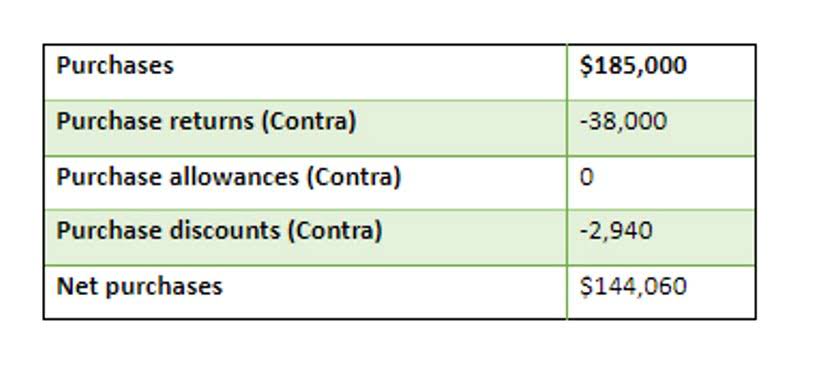Content
- What is the Cash Over and Short Account?
- indicate by account name which accounts should be debited and which should be credited when preparing journal entries….
- Handling your accounts payable
- Using accrual accounting and cash disbursement journals
- Accounting for cash transactions
- Plagiarism Checker
- Cash Over and Short

Cash Over and Short acts as a Revenue account when there is an overage. It’s “other revenue” for you, not a normal source of revenue like your paycheck. This account is used to record both increases and decreases to profits resulting from errors.
In the example, if you have $300 in vouchers for office supplies and $140 for transportation expense, add $300 to $140 to get $440 in total vouchers created during the period. The cash over and short account is used when an imprest account, such as petty cash, fails to prove out. The account is typically left open until the end of a company’s fiscal year, when it is then closed and reported as a miscellaneous expense on the income statement. A company’s cash over or cash short amount will be reported on its income statement. To determine whether a company is cash over or cash short, businesses need to compare the amount of cash on hand with the amount of cash that was expected.
What is the Cash Over and Short Account?
The cash over and short account is used to record the difference between the expected cash balance and the actual cash balance in the imprest account. A company uses a cash over and short account to show a discrepancy between the company’s sales records and other reported figures and its audited accounts. For example, if the cash in the register is less than the amount on your sales receipts, then you have a cash shortage, reports Double Entry Bookkeeping.
- However, the company still needs to account for the cash overage or shortage with a proper journal entry in order to match the balance on the debit with the balance on the credit in the accounting system.
- This reconciliation is necessary because the cash balance in your books will never agree with the balance shown on the bank statement.
- The cash short and over account is used to record the distinction between the predicted cash balance in the interest account and the actual cash balance.
- Compare this amount to the sum of the individual accounts payable ledgers.
- One asset is increasing, while another asset is decreasing by the same account.
- The beginning accounts payable total, plus purchases on account during the month, minus payments on account during the month, should equal the ending accounts payable total.
- Let’s assume Tom rang up a $100 pair of running shoes for $100, but he miscounted the cash received for the shoes.
A cash short and over account offers a way to track the cash management skills of employees. The sums in the account are usually so low that the balance of the account will be combined with other trivial sums listed as other expenses on the income statement. A cash short and over account is used when there is no evidence of an impressed account, such as small cash. The account is usually left active until around the end of such a company’s fiscal period or year. It is then shut and listed on the income statement as a miscellaneous cost.
indicate by account name which accounts should be debited and which should be credited when preparing journal entries….
The sum of all your customer accounts receivable is listed as a current asset on your balance sheet. Preparing a bank reconciliation when you receive your bank statement every month helps you verify the amount of cash in your checking account. Simply plug in your daily amounts to see instantly whether you have a https://www.bookstime.com/law-firm-bookkeeping cash shortage or surplus at the end of the day. You can use the spreadsheet over and over again for your daily needs. Alternatively, if there had been too much cash in the petty cash box (a rare condition indeed!), the entry would be reversed, with a debit to cash and a credit to the cash over and short account.

Credit, or decrease, your cash account by the amount by which you must replenish the petty cash account in the journal entry. Count the money remaining in your petty cash account at the end of an accounting period. Now subtract the amount remaining from the account’s original balance to determine by how much you need to replenish the account. In the example, if your petty cash account’s original balance was $1,000, subtract $550 from $1,000 to get $450, which is the amount by which you need to replenish the account.
Handling your accounts payable
Maintaining cash sheets provides an alert to any shortage or surplus of cash for the day. Some businesses opt to simply count the cash in the register at the end of the day without maintaining a cash sheet, leaving them clueless to any shortages or overages. A shortage could be the result of theft, or it could simply result from your failure to record a special transaction, cash short and over journal entry such as an expense you paid in cash—but without a cash sheet, you’ll never know. A cash sheet is a daily reconciliation of cash received and cash paid out. If a good deal of your business is transacted in cash, such as in a retail store, you should prepare a cash sheet at the end of each day. It’s sound practice to deposit all cash receipts in your bank account daily.
- After posting to the ledger (we’ll use T accounts here), the checking account balance will go down by $100 and the petty cash balance will go up by $100.
- Cash short situations tend to be more common than cash over and happen when businesses have less cash on hand than what was expected.
- The journal entry to record this sale would debit cash for $101, credit sales for $100, and credit cash over short for one-dollar.
- The easiest way to keep this money available is through a petty cash fund, unless, your business has cash on hand from daily transactions.
- To determine whether a company is cash over or cash short, businesses need to compare the amount of cash on hand with the amount of cash that was expected.
- If a petty cash account is consistently short, this may be a warning sign that there is not a proper control of the account, and management may want to consider additional controls to better monitor petty cash.
- In the next section, we’ll look at one of the most important cash controls, the bank reconciliation process, in detail.
You could accumulate all bills for the month from that supplier, then record one transaction in the purchases journal at the end of the month. The beginning accounts receivable total, plus charge sales for the month, minus payments on account for the month, should equal the ending accounts receivable total. Compare this amount to the sum of the individual customer accounts receivable ledgers. This will help you discover any errors in your customer statements before you mail them out. Your accounting software should notify you of discrepancies automatically. Nearly all businesses need some cash on hand to pay small, miscellaneous expenses.
